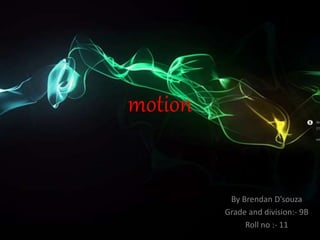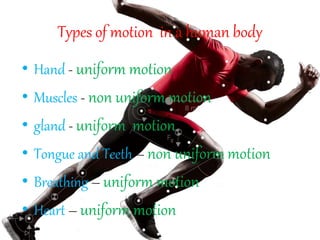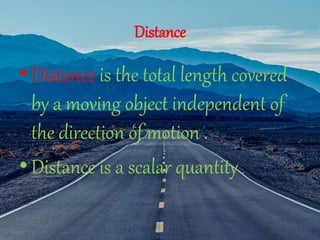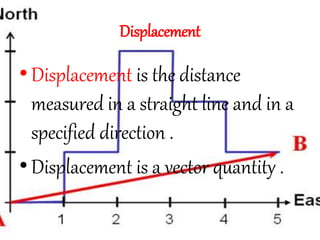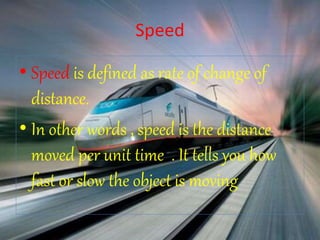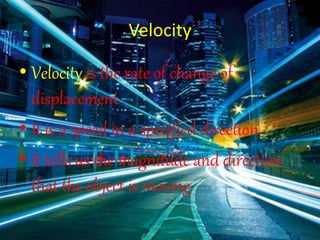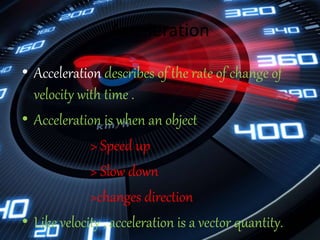The document discusses different types of motion in the human body including uniform motion like breathing and the heart, and non-uniform motion like the hands, muscles, tongue, and teeth. It also defines key concepts in motion including distance as the total length covered independent of direction, displacement as distance in a specified direction, speed as the rate of change of distance over time, velocity as speed in a specified direction describing both magnitude and direction of motion, and acceleration as the rate of change of velocity with time such as when an object speeds up, slows down, or changes direction.

